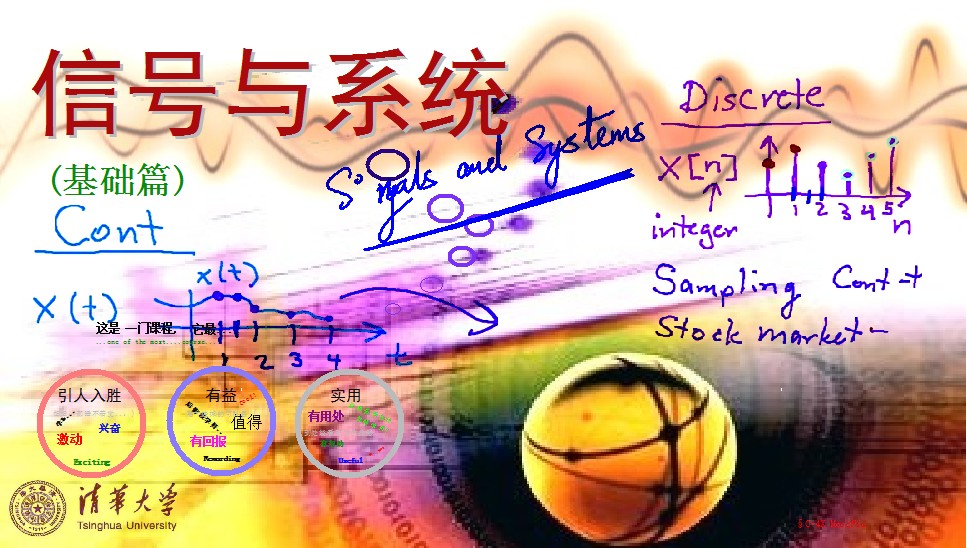
当前课程知识点:History of Western Civilization 全英文西方文明史 > Chapter 4 Ancient Roman Civilization 2 > 4.3 Crisis of the Third Century and Constantine > 4.3.2 Video
返回《History of Western Civilization 全英文西方文明史》慕课在线视频课程列表
4.3 The Crisis of the Third Century and Constantine
Hi, everybody. This is the third part of chapter four: The Crisis of the Third Century and Constantine.
1. The Year of the Five Emperors 193AD
We talked about the last time, Commodus was assassinated in 192 and this marked the end of the 200-year Pax Romana. The next year 193 AD a new civil war started. Within one year five emperors claimed to be the Roman Emperor. The first one was Pertinax, a son of a freed slave; the first emperor was not from the patrician family. He first worked as a school teacher, later abandoned his career and joined the army. Less than three months Pertinax was murdered by his own soldiers.
The Severan Dynasty
The last of the five emperors was Severus, another powerful general who restored the order and founded the Severan Dynasty. This dynasty had experienced power struggles within the imperial family and constant political turmoil. It had 6 emperors, ruled 43 years until the last emperor Severus Alexander was assassinated by his own troops in 235. It was the last dynasty of the Roman Empire before the Crisis of the Third Century.
2. The Crisis of the Third Century (235–284AD) also known as the Imperial Crisis and Military Anarchy was a period in the history of the Roman Empire. The Crisis lasted for 50 years started from the assassination of Severus Alexander in 235 to 284 when Diocletian became emperor. The Roman Empire nearly collapsed under the combined crises including barbarian invasions, civil wars, plague, and economic disasters. During these 50 years, at least 26 people claimed themselves the title of emperor, most of them powerful army generals; they controlled all or part of the Empire. At the same time 26 were accepted by the Roman Senate as legitimate emperors. 17 of these legitimate emperors were assassinated or killed in civil war.
By 268, the empire had broken into three parts: first the Gallic Empire to the west, including provinces of Germania, and Gaul, and sometime Hispania, and Britannia; second the Palmyrene Empire, including the eastern provinces of Syria Palaestina, Arabia, Egypt and large parts of Asia Minor. Palmyra is in today’s Syria. And in the middle was the independent Roman Empire.
3. External Threats came from all directions. Berbers, an ethnic group indigenous to North Africa harassed the southern frontiers. To the east in today’s Iran there was a constant threat to the Roman Empire, Sasanian Empire. The Sasanian Empire from 224 to 651 was the Persian Empire before the rise of Islam. But the biggest threat was from north and west, the Germanic peoples (日耳曼人). "Germania" was the Roman term for the region in north-central Europe, located to the north and east of the Gaul, an area extended from the Danube River to the Baltic Sea and from the Rhine River to the Vistula River in Poland. "Germanic peoples" referred to the tribes lived in Germania. They were considered barbarians by Romans, less civilized and more physically hardened.
4. Germanic peoples originally lived in the southern region of Scandinavia. From around 500BC they started migration to the south and southeast, finally became the threat of the Roman frontiers. We can see the migration of the Germanic peoples from this map.
5. The Germanic people in the west were the Franks on the Lower and Middle Rhine River area. To the east the Goths, they played an important role in the fall of the Western Roman Empire. The western branch of the Goths called Visigoths and the eastern branch of Goths called Ostrogoths. The Vandals were another East Germanic inhabiting present-day southern Poland.
6. Today’s Germanic peoples are those who speak Germanic languages, a branch of the Indo-European language family. The West Germanic languages including English, German and Dutch. The North Germanic languages are Danish, Faroese, Icelandic, Norwegian and Swedish. We should know the difference between the Germanic peoples (日耳曼人), and Germans. "Germen" has three meanings, first (德意志人) all people who speaks German, the Germanic ethnic group including Germans in Germany and other counties, mainly Austria, Switzerland, Liechtenstein and Luxembourg. Second (德国人) the people of the county of Germany. Third, German is a language spoken by all Germans (德语). The other two important languages in Europe are Romance and Slavic language. The Romance languages also called the Latin languages including Spanish, Portuguese, French, Italian, and Romanian and so on. The Slavic languages including Russian, Belarusian, Ukrainian, Polish, Czech and Slovak and so on.
7. Aurelian 270 to 275
Aurelian was the emperor ruled the Empire from 270 to 275. He was a great military commander. He stabilized the frontiers by defeating several Germanic tribes and conquered the Gallic Empire in the west and Palmyrene Empire in the east. He united the whole Empire. The city of Orléans "city of Aurelian" in France is named after Aurelian.
8. Diocletian (284-305) was a successful Soldier-Emperor who finally restored and stabilized the Empire and finally finished the Crisis of the Third Century.
The Tetrarchy. Diocletian received the title of Iovius or Jupiter thus was treated like a living god. Diocletian created a new form of government Tetrarchy; the term Tetrarchy was used by historians in the 19th century to describe the new form of government. It was from a Greek term meaning "leadership of four people". Diocletian divided the Empire into eastern and western parts and each part ruled by a senior emperor called Augustus and a junior emperor called Caesar. Caesar was younger, who would be adopted by the Augustus as son and heir and marry the daughter of Augustus and in the future to succeed Augusta. From this map, we can see the empire were ruled by the four emperors. In the east, Diocletian was Augustus, he ruled this area, and Caesar was Galerius; in the west the Augustus Maximian ruled this area, and the Caesar Constantius lived in this area. Thus the empire was divided into four districts.
Great Persecution. One day in 299, Diocletian took part in a ceremony of sacrifice aimed to predict the future. But the Roman priests were unable to obtain the desired omens. They blamed this failure to the presence of the Christians. This led to the Great Persecution from 303- 313. Diocletian issued four "Edict against the Christians" ordered the destruction of Christian scriptures and places of worship across the empire, and prohibited Christians from assembling for worship. Many Christians have been executed.
9. Saint Constantine 306-337
Constantine was Roman Emperor from 306 to 337. We know Diocletian created a new form of government Tetrarchy. In the East Diocletian was Augustus, Caesar was Galerius; in the west Maximian was Augustus, and the Caesar was Constantius. Constantine was the son of Constantius, the junior or deputy emperor called Caesar, his mother Helena was Greek. In 305 the two emperors Diocletian in the east and Maximian in the west both abdicated, giving up being emperor. This action was intended to promote the two Caesars to be Augustus. But in the west the sons of senior and junior emperor started fighting each other. In 312 at the Battle of the Milvian Bridge outside Rome, Constantine defeated and killed his enemy Maxentius, the son of the former Augustus Maximian. The night before the battle, Constantine was told in a dream to mark his shield with a sign called Chi – Rho, a cross formed by the first two letters of the Greek word for "Christ." He followed it and won the battle. He was the first emperor baptized and converted to Christianity. He became the sole ruler of both west and east by 324. He established his capital in Byzantium, called it New Rome, later known as Constantinople. He began to transform the Roman Empire into a Christian state and Christianity into a state religion of the Roman Empire.
10.This is the Battle of the Milvian Bridge. We can see Cristian symbol Chi – Rho from the side of Constantine’s army.
11.These are the key Words: the Crisis of the Third Century, Germanic peoples, Tetrarchy,Constantine, Constantinople.
This is the third part of the 4th chapter the Crisis of the Third Century and Constantine.
返回《History of Western Civilization 全英文西方文明史》慕课在线视频列表
Hi everybody
This is the third part of the chapter four
The Crisis of the Third Century and Constantine
We talked about the last time
Commodus was assassinated in 192
and this marked the end of the 200 year Pax Romana
The next year 193 AD a new civil war started
Within one year five emperors claimed to be the Roman Emperor
The first one was Pertinax a son of a freed slave
the first emperor was not from the patrician family
He first worked as a school teacher
later abandoned his career and joined the army
Less than three months
Pertinax was murdered by his own soldiers
The last of the five emperors was Severus
another powerful general who restored the order
and founded the Severan Dynasty
This dynasty had experienced power struggles
within the imperial family and constant political turmoil
It had 6 emperors
ruled 43 years until the last emperor Severus Alexander
was assassinated by his own troops in 235
It was the last dynasty of the Roman Empire
before the Crisis of the Third Century
The Crisis of the Third Century
also known as the Imperial Crisis and Military Anarchy
was a period in the history of the Roman Empire
The Crisis lasted for 50 years
started from the assassination of Severus Alexander in 235
to 284 when Diocletian became emperor
The Roman Empire nearly collapsed
under the combined crises including barbarian invasions
civil wars plague and economic disasters
During these 50 years
at least 26 people claimed themselves the title of emperor
most of them powerful army generals
They controlled all or part of the Empire
At the same time 26 accepted by the Roman Senate
as legitimate emperors
17 of these legitimate emperors were assassinated
or killed in civil war
By 268 the empire had broken into three parts
First the Gallic Empire to the west
including provinces of Germania
Germania and Gaul and sometime Hispania and Britannia
Second the Palmyrene Empire
including the eastern provinces of Syria Palaestina
Arabia Egypt and large parts of Asia Minor
Palmyra is in today’s Syria
And in the middle was the independent Roman Empire
External Threats came from all directions
Berbers an ethnic group indigenous to North Africa
harassed the southern frontiers
To the east in today’s Iran
there was a constant threat to the Roman Empire Sasanian Empire
The Sasanian Empire from 224 to 651
was the Persian Empire before the rise of Islam
But the biggest threat was from north and west
the Germanic peoples
Germania was the Roman term
for the region in north central Europe
located to the north and east of the Gaul
an area extended from the Danube River to the Baltic Sea
and from the Rhine River to the Vistula River in Poland
Germanic peoples was referred to the tribes lived in Germania
They were considered barbarians by Romans
less civilized and more physically hardened
Germanic peoples originally lived
in the southern region of Scandinavia
From around 500BC
they started migration to the south and southeast
finally became the threat of the Roman frontiers
We can see the migration of the Germanic peoples from this map
The Germanic people in the west were the Franks
on the Lower and Middle Rhine River area
To the east the Goths
They played an important role
in the fall of the Western Roman Empire
The western branch of the Goths called Visigoths
and the eastern branch of Goths called Ostrogoths
The Vandals were another East Germanic people
inhabiting present day southern Poland
Today’s Germanic peoples are those
who speak Germanic languages
a branch of the Indo European language family
The West Germanic languages including English
German and Dutch
The North Germanic languages are Danish
Faroese Icelandic Norwegian and Swedish
We should know the difference
of the Germanic peoples and Germans
Germen has three meanings
First all people who speaks German
the Germanic ethnic group including Germans in Germany
and other counties mainly Austria Switzerland
Liechtenstein and Luxembourg
Second the people of the county of Germany
Third German is a language spoken by all Germans
The other two important languages in Europe
are Romance and Slavic language
The Romance languages also called the Latin languages
including Spanish Portuguese French Italian
and Romanian and so on
The Slavic languages including Russian Belarusian
Ukrainian Polish Czech and Slovak and so on
Aurelian was the emperor ruled the Empire from 270 to 275
He was a great military commander
He stabilized the frontiers by defeating several Germanic tribes
and conquered the Gallic Empire in the west
and Palmyrene Empire in the east
He united the whole Empire
The city of Orleans city of Aurelian in France
is named after Aurelian
Diocletian was a successful soldier Emperor
who finally restored and stabilized the Empire
and finally finished the Crisis of the Third Century
Diocletian received the title of Iovius or Jupiter
thus was treated like a living god
Diocletian created a new form of government Tetrarchy
the term Tetrarchy was used by historians in the 19th century
to describe the new form of government
It was from a Greek term meaning leadership of four people
Diocletian divided the Empire into eastern and western parts
and each part ruled by a senior emperor called Augustus
and a junior emperor called Caesar
Caesar was younger who would be adopted by the Augustus
as son and heir and marry the daughter of Augustus
and in the future to succeed Augustus
From this map we can see the empire
were ruled by the four emperors
In the east Diocletian was Augustus
He ruled this area and Caesar was Galerius
In the west the Augustus Maximian ruled this area
and the Caesar Constantius lived in this area
Thus the empire was divided into four districts
One day in 299 Diocletian took part in a ceremony of sacrifice
aimed to predict the future
But the Roman priests were unable to obtain the desired omens
They blamed this failure to the presence of the Christians
This led to the Great Persecution from 303 to 313
Diocletian issued four edicts against the Christians
ordered the destruction of Christian scriptures
and places of worship across the empire
and prohibited Christians from assembling for worship
Many Christians have been executed
Constantine was Roman Emperor from 306 to 337
We know Diocletian created a new form of government Tetrarchy
In the East Diocletian was Augustus
Caesar was Galerius
In the west Maximian was Augustus
and the Caesar was Constantius
Constantine was the son of Constantius
the junior or deputy emperor called Caesar
His mother Helena was Greek
In 305 the two emperors Diocletian in the east
and Maximian in the west both abdicated
giving up being emperor
This action was intended
to promote the two Caesars to be Augustus
But in the west the sons of senior and junior emperor
started fighting each other
In 312 at the Battle of the Milvian Bridge outside Rome
Constantine defeated and killed his enemy Maxentius
the son of the former Augustus Maximian
The night before the battle
Constantine was told in a dream
to mark his shield with a sign called Chi Rho
a cross formed by the first two letters of the Greek word for Christ
He followed it and won the battle
He was the first emperor baptized and converted to Christianity
He became the sole ruler of both west and east by 324
He established his capital in Byzantium called it New Rome
later known as Constantinople
He began to transform the Roman Empire into a Christian state
and Christianity into a state religion of the Roman Empire
This is the Battle of the Milvian Bridge
We can see Cristian symbol Chi Rho
from the side of Constantine’s army
These are the key words
the Crisis of the Third Century
Germanic peoples
Tetrarchy
Constantine
Constantinople
This is the third part of the 4th chapter
the Crisis of the Third Century and Constantine
-1.0 Introduction
--1.0.3 Exercises
-1.1 Greek Bronze Age and Dark Age
--1.1.3 Exercises
-1.2 Greek Gods
--1.2.3 Exercises
-1.3 Archaic Greece
--1.3.3 Exercises
-1.4 Athens and the Persian Wars
--1.4.3 Exercises
-1.5 Discussion
-2.1 War and politics in the fifth century BC
--2.1.3 Exercises
-2.2 Greece in the fourth century BC
--2.2.3 Exercises
-2.3 Classical Greek Philosophy
--2.3.3 Exercises
-2.4 Athenian Drama
--2.4.3 Exercises
-2.5 Alexander the Great and Hellenistic World
--2.5.3 Exercises
-2.6 Discussion
-3.1 Roman Kingdom
--3.1.3 Exercises
-3.2 Early Republic
--3.2.3 Exercises
-3.3 Mid-Republic
--3.3.3 Exercises
-3.4 Late-Republic
--3.4.3 Exercises
-3.5 End of the Republic
--3.5.3 Exercises
-3.6 Discussion
-4.1 Pax Romana 1
--4.1.3 Excecises
-4.2 Pax Romana 2
--4.2.3 Excecises
-4.3 Crisis of the Third Century and Constantine
--4.3.3 Excecises
-4.4 The Victory of Christianity
--4.4.3 Exercises
-4.5 The Fall of the Roman Empire
--4.5.3 Exercises
-4.6 Discussion
-5.1 Early Middle Ages
--5.1.3 Excecises
-5.2 Carolingian Dynasty
--5.2.3 Excecises
-5.3 High Middle Ages
--5.3.3 Excecises
-5.4 Late Middle Ages 1
--5.4.1 Excecises
-5.5 Late Middle Ages 2
--5.5.3 Excecises
-5.6 Discussion
-6.1 The Renaissance
--6.1.3 Exercises
-6.2 Protestant Reformation
--6.2.3 Exercises
-6.3 Italian Wars and Rise of Russia
--6.3.3 Exercises
-6.4 Age of Discovery
--6.4.3 Exercises
-6.5 French War of Religion and Russia’s Time of Trouble
--6.5.3 Exercises
-6.6 Discussion
-7.1 The Thirty Years War
--7.1.3 Exercises
-7.2 English Revolution
--7.2.3 Exercises
-7.3 Three Absolute Monarchs
--7.3.3 Exercises
-7.4 Dutch Golden Age
--7.4.3 Exercises
-7.5 Science and Culture in the 17th Century
--7.5 Text
--7.5.3 Exercises
-7.6 Discussion
-8.1 The United Kingdom
--8.1.3 Exercises
-8.2 The American Revolution
--8.2.3 Exercises
-8.3 The French Revolution
--8.3.3 Exercises
-8.4 Age of Enlightenment
--8.4.3 Exercises
-8.5 West after the 18th century
--8.5.3 Exercises
-8.6 Discussion



